In our slowly evolving grand tour of the Japanese islands we took a day trip to Kanazawa a couple of weeks ago. It's a medium-sized city on the Japanese Sea side, due north from Kansai. The train from Osaka takes about 2.5 hours, making it just reachable without spending too much time traveling. An acquaintance of Ritsuko's was having an art exhibition at the city museum giving us a reason to go.
The place is said to be famous for its seafood - but then, Japan is an island nation and obsessive about food; every place here is famous for its seafood, in its own eyes if nothing else. In fact, if there's a place in Japan not famous for its seafood - perhaps even known for its lack of quality and variety - I think I would like to visit it. So would, I guess, plenty of other people. Places become travel destinations when they offer something different after all, and whatever could be more different here than not having good seafood?
The place is said to be famous for its seafood - but then, Japan is an island nation and obsessive about food; every place here is famous for its seafood, in its own eyes if nothing else. In fact, if there's a place in Japan not famous for its seafood - perhaps even known for its lack of quality and variety - I think I would like to visit it. So would, I guess, plenty of other people. Places become travel destinations when they offer something different after all, and whatever could be more different here than not having good seafood?
It could have a big market with excellent meat, poultry, and eggs, stalls heaped high with vegetables, cheeses, locally made miso and tofu - any and all kind of land-based food you could imagine. In one corner would be a single tourism board-employed fishmonger offering a small, sorry selection of seafood. Perhaps a few sad-looking bony river fish and a single pack of Norwegian smoked salmon well past its sell-by date. You'd have people flocking five deep around the poor man, taking his picture, buying up local produce for presents back home and fighting for phone straps and postcards featuring the local logo. Perhaps a cute, cartoonish dead-smelly-fish character would be appropriate?
Anyway, Kanazawa. It's a decent-sized city of 450.000 people, larger than Aomori (which we visited recently) by almost half, and with a decently busy atmosphere. Plenty of tourists on the street too. There's the art museum I mentioned above; some restored old entertainment neighbourhoods; the remains of the castle; a large, bustling fish market; and, most famous, the Kenroku garden, one of the three foremost gardens in Japan.
We came off the train (scenic ride, by the way) and walked from the station, via the fish market towards the museum. The whole city is quite compact so walking around is no problem. We stopped by for something to eat before going to the museum; culture is best experienced on a full stomach.
Restaurant Ōtsuka is an inexpensive eatery on a back street in central Kanazawa. It's a place of buckling linoleum floors and dark brown wood interior getting darker and browner from many years of tobacco smoke and stains. Tin plates, scratched glassware and beer crates in the corner. If you're looking for luxury, look elsewhere.
But if you're looking for a homey atmosphere, wonderful food, shelves of manga to read and generally a place to put up your feet and relax for a while then this is the place to go. Were I to live in Kanazawa I would happily grow old(er) and fat(ter) in this place.
Hanton rice is a local specialty and a specialty at the Ōtsuka restaurant. Like the nationally popular dish of omuraisu (from "omelet and rice"), it's a heaping of tomato sauce-flavoured rice wrapped in a creamy omelet. But hanton rice adds fried seafood - fish and shrimp - to the omelet and tops it with big dollops of ketchup and mayonnaise. This is some seriously heavy food, true, and probably a health disaster but it is absolutely, amazingly delicious. I wish there was a place in Osaka that served this.
After lunch we walked over to the museum. It is startlingly like just about any recent art museum anywhere in the world. A low-slung structure with white, angular surfaces, and a sprinkling of permanent artworks comissioned for the site. As I believe I wrote in the Aomori post, I consider this a good thing. You come there for the exhibitions and not the building, and anything that elevates the artwork over the architecture is good. As always there's no good pictures of the actual exhibition we came for and any photography in the exhibition halls was forbidden.
They do a good job at this museum of keeping visitors - younger visitors especially - interested with their permantent installations. This pool was really cool, and very popular too.
I'm a little ambivalent towards this kind of piece though. It's basically having one fun or offbeat idea and taking it as far as it goes. I love that kind of stuff, and many a technology or science demonstration is conceived and realized in the same way. I'm just not sure it qualifies as art. This pool doesn't seem to have any meaning or message to the viewer other than "Hey, look, cool isn't it?" This would fit in a trade-show booth (ok, a big booth) or world expo pavilion as much as an art museum. Not that I'm complaining.
The Kenroku gardens is the main reason most people come to this city. It's considered one of the three top public gardens in the country. It is very beautiful, with sculpted greenery, carefully planned views and dotted with teahouses and other small buildings. It is also overrun with visitors. Out of the way corners and the less spectacular views are easy enough to get to, but the main points of interest were frankly so crowded we gave up on trying to get a good look.
Every autumn workers attach ropes to the wide-branched trees in the park like this so that the heavy, wet snow of winter doesn't break them. No safety harnesses needed for this job, apparently.
You can find solitude and stillness in the park - if you are patient and if only for the 1/40 of a second you need for a picture.
This stone lantern is famous, and stands as a symbol of the city. It is apparently also all but impossible to photograph this time of day without catching half a dozen other people. Popular spot.
After the gardens we walked across the river to Higashi Chayamachi ("Eastern Tea house street"), an old Geisha entertainment street, preserved more or less intact. Nice, though again full of people. There's some teahouses, restaurants and the inevitable accessory and sweet shops; Japanese tourists are more commonly women rather than men and tourist spots plan accordingly.
By the time we passed by the fish market again - to pick up some crab we'd bought - it was getting dark already. We had dinner at a sushi place in the market, then walked across the street to a department store with a very relaxing cafe with a good city view on the eight floor.
It's interesting to compare Kanazawa with Aomori. Both are regional hubs in backwater areas; both have notable tourist draws and both have fairly recent new museums and other facilities for tourists. Now, we had much better weather going to Kanazawa (an oddity as Kanazawa weather apparently is very unstable) so the overall impression is of course brighter and busier. It certainly felt more alive than Aomori did, it is significantly larger, it is closer to major metropolitan areas and its foremost visitor draw - the garden - is very famous indeed. That said, if I had to choose a place to live I think I'd prefer Aomori. It was a bit slow and a bit under the weather and didn't have the same sparkle as Kanazawa did. Kanazawa certainly has more things to see and do; the museum and fish market are both bigger and better in Kanazawa than Aomori. But after two days and one night in Aomori I still wanted to stay longer. Kanazawa, on the other hand, was fun but a day trip felt like plenty enough.
All pictures are available in the Kanazawa set here.

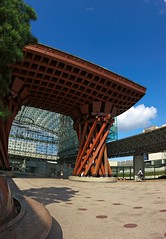
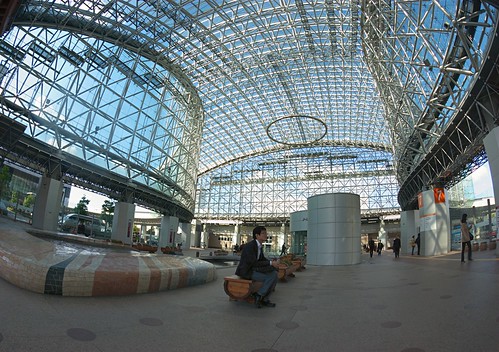
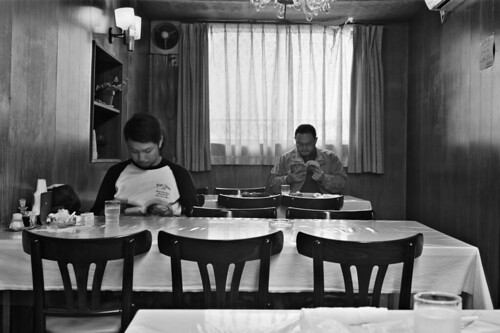
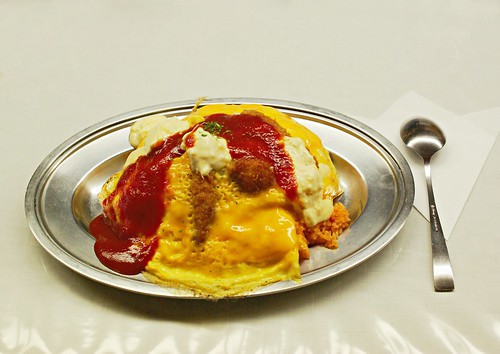


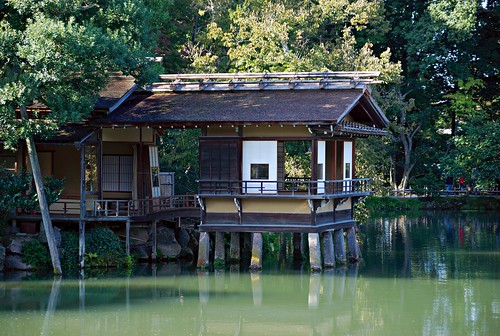
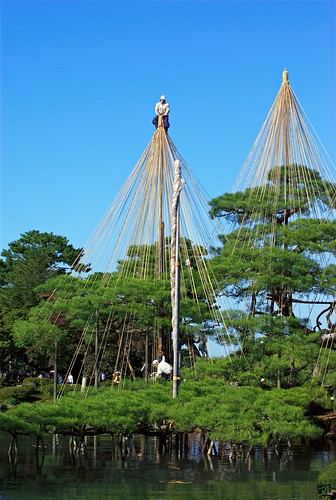
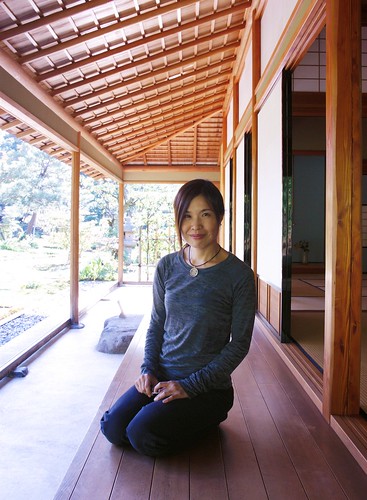
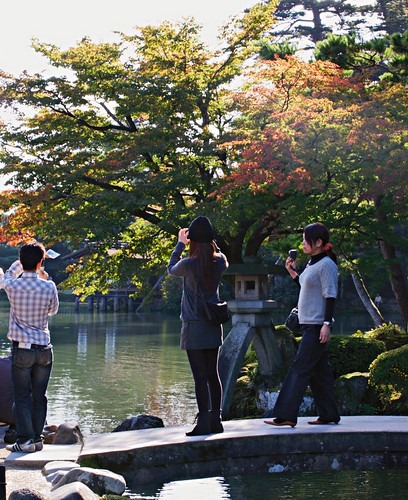
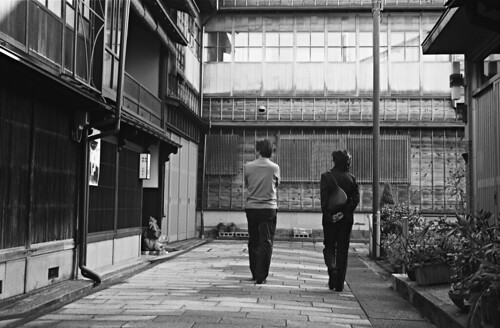
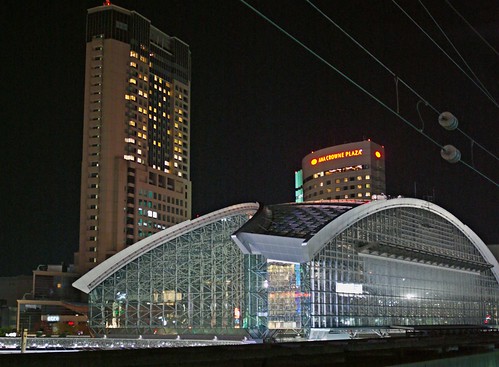
According to Wikipedia, hanton raisu means “Hungarian tuna rice”. The Hungarian tuna is a Bluefin tuna subspecies that is found only in Hungarian waters. The delectable fish is particularly prized by the Magyars, and is displayed prominently on the national flag. The Roma people by contrast believe that eating it causes male impotence and otherwise brings bad luck. This disagreement has been the source of much ethnic strife over the centuries and is considered by many historians to be one of the causes of the breakup of the Austro-Hungarian Empire. If you’d like to know more, please ask your wife to translate the Wikipedia entry.
ReplyDeleteAhhh! Should have checked Wikipedia myself; I never considered that the name could have an interesting etymology. I just assumed it was something bland like "半豚", rendered in katakana to match the "ライス" suffix and evoke the similarity to "オムライス".
ReplyDeleteThanks!